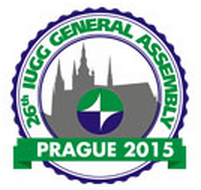Special session on IIOE-2 convened at the 26th IUGG General Assembly in Prague

Abstracts are welcomed to submitted to the special session on the 50th Anniversary of the Indian Ocean Expedition(IIOE-2) that will be convened during the IAPSO symposium at the IUGG General Assembly in Prague during 26-30 June 2015 (http://www.iugg2015prague.com). The details are available at http://www.iugg2015prague.com/iapso-symposia.htm. Abstracts can be submitted at http://www.iugg2015prague.com/abstract-submission.htm. The deadline for the submission of abstracts is 31 January 2015.
IIOE to IIOE-2 - Five Decades of Indian Ocean Oceanography: Challenges in Physics and Biogeochemistry of the Indian Ocean
The first coordinated investigation of the Indian Ocean was carried out during the International Indian Ocean Expedition (IIOE) in 1962–65. It consisted of a basin-wide survey that subsequently resulted in a comprehensive hydrographic atlas and number of regional studies, including the first survey of the seasonally reversing Somali Current. IIOE was planned and executed by the Scientific Committee on Ocean Research (SCOR) and the Intergovernmental Oceanographic Commission (IOC) with the involvement of 20 countries. Forty-six research vessels belonging to 14 countries participated in the basin wide hydrographic surveys. It was an unprecedented interdisciplinary endeavor embracing physical oceanography, chemical oceanography, marine biology, meteorology and marine geology and geophysics.
In the 50 years since the IIOE, many subsequent programs have lead to improvements in our ability to observe the ocean and atmosphere through the deployments of oceanographic and meteorological sensors on Earth-observing satellites and through deployment of in situ instruments like autonomous profiling floats, moored buoys, tsunami detection networks, sea level gauges, etc. All of them have dramatically improved the characterization of both physical and biological oceanographic variability and the atmospheric forcing of that variability. Together with the improvements in observing, ocean modeling in all its facets from short-term forecasting to seasonal prediction to climate projections also has improved dramatically. Based on these improvements, science foci have also been changed from understanding of climatological states to their variability. Hence, compared to the IIOE era, which relied almost exclusively on ship-based observations, new measurement technologies in combination with targeted and well-coordinated field programs provide the capacity for a much more integrated picture of the Indian Ocean variability. This symposium, on the eve of the 50th Anniversary of the IIOE, will review the current state of our knowledge about the physics and biogeochemistry of the Indian Ocean and highlight the scientific challenges to be addressed during a second multi-disciplinary, multi-national Indian Ocean Expedition (IIOE-2) to be carried out over 2015-2020.
Conveners: Satheesh Shenoi, Mike McPhaden, Yukio Masumoto and Raleigh Hood













